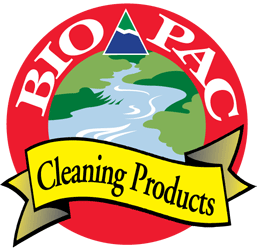Readily Biodegradable Ingredients
The goal of Bio Pac, Inc. is to make cleaning products that work great then rapidly biodegrade. We are committed to making the most environmentally friendly detergents and soap possible, and are always working to find the most environmentally safe ingredients.
Our products list exact ingredient names. Instead of a “friendly’ sounding ingredient list, we feel you have a right to know exactly what’s in our products! All cleaning products contain a mixture of water and surfactants which are the surface active agents, also called detergents, emulsifiers, and cleaners. These ingredients have some long, complicated names (thanks organic chemistry), but we have specifically chosen ones that are known to be environmentally safer alternatives.
We are utterly opposed to animal testing and there are no animal ingredients in our products.
For actual ingredient listing, please visit the product page.
Vegetable or Petroleum based?
Many surfactant makers use vegetable oils as starting points, but the actual process that turns these oils into surfactants brings them into direct contact with petrochemicals. (See Garbage, Sep/Oct, 1991 pg. 36 for a complete Petrochemical primer. This issue IS must reading for anyone who is interested in the exact origins of natural products. The real problem with petroleum is that we BURN it_ and burn a lot of it! The Indians used naturally occurring petroleum for centuries where it seeped from the ground. Animal Testing Our finished products are never tested on animals and contain no animal products.
A Note on Optical Brighteners
Over time, laundry begins to gray from repeated washings. Previously, bluing agents were added to the wash to dye them blue, making them look somewhat brighter. Because bluing only worked so well, optical brighteners were added to commercial brands of laundry compounds. Optical brighteners, also called fabric whiteners, are fluorescent dyes that coat the clothing, absorbing uv light and emitting blue light which makes the clothing appear brighter. After using our laundry products over a period of time, your laundry will be clean, but not “whiter than white!” There are really no substitutes for optical brighteners. Non-chlorine bleach will add back some brightness to your clothing and you can also try adding borax or vinegar and you can still buy bluing agents at most markets, which are nothing more than chemical dyes. However, if you insist on “glowing clothing”, use a commercial fabric softener occasionally as all of them contain optical brighteners. This will restore the brightness to your clothing. We do not use optical brighteners in our formulations because their biodegradability is questionable and their long term effects are unknown. Many people experience rashes with these brighteners. Optical brighteners are what makes your clothing glow under black light. Remember, your clothes are not cleaner, they just look brighter. We feel these chemicals are unnecessary and encourage you not to use them. Of course, we do not use any dyes or harmful fragrances in our product either.
For those interested in all kinds of ingredient information, we have presented the list below. Please note, none of our ingredients are listed in these links!
If you have any questions or suggestions about our ingredients, please contact us.
| Oasis Biocompatible Laundry Liquid |
